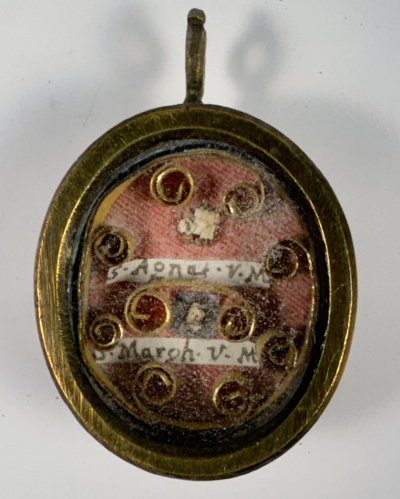Saint Agnes of Rome (†c. 304) is a virgin martyr, venerated as a saint in the Catholic Church, Oriental Orthodox Church and the Eastern Orthodox Church. She is one of several virgin martyrs commemorated by name in the Canon of the Mass, and one of many Christians martyred during the reign of the Roman emperor Diocletian. After Agnes was sentenced to death, she was led out and bound to a stake to be burned, but the bundle of wood would not burn, or the flames parted away from her. The officer in charge of the troops drew his sword and beheaded her. It is said that when her blood poured to the stadium floor, other Christians soaked it up with cloths. Her bones are conserved beneath the high altar in the church of Sant'Agnese fuori le mura in Rome, built over the catacomb that housed her tomb. Her skull is preserved in a separate chapel in the church of Sant'Agnese in Agone in Rome's Piazza Navona. Her Feast Day is commemorated on 21 January.
Saint Margaret of Antioch also known as Saint Marina the Great Martyr in the East, is celebrated as a saint by the Eastern-Rite Orthodox Church on July 17 and on July 20 in the Western Rite Orthodox, Roman Catholic, and Anglican Churches. She was reputed to have promised very powerful indulgences to those who wrote or read her life, or invoked her intercessions; these no doubt helped the spread of her cultus. The veneration of Saint Margaret became very widespread in England, where more than 250 churches are dedicated to her, most famously, St. Margaret's, Westminster, the parish church of the British Houses of Parliament in London. She is considered a Holy Patron of childbirth, pregnant women, dying people, kidney disease, peasants, exiles, falsely accused people; Lowestoft, England; Queens' College, Cambridge; nurses; Sannat and Bormla, and Malta.









 Поменять язык на русский
Поменять язык на русский 